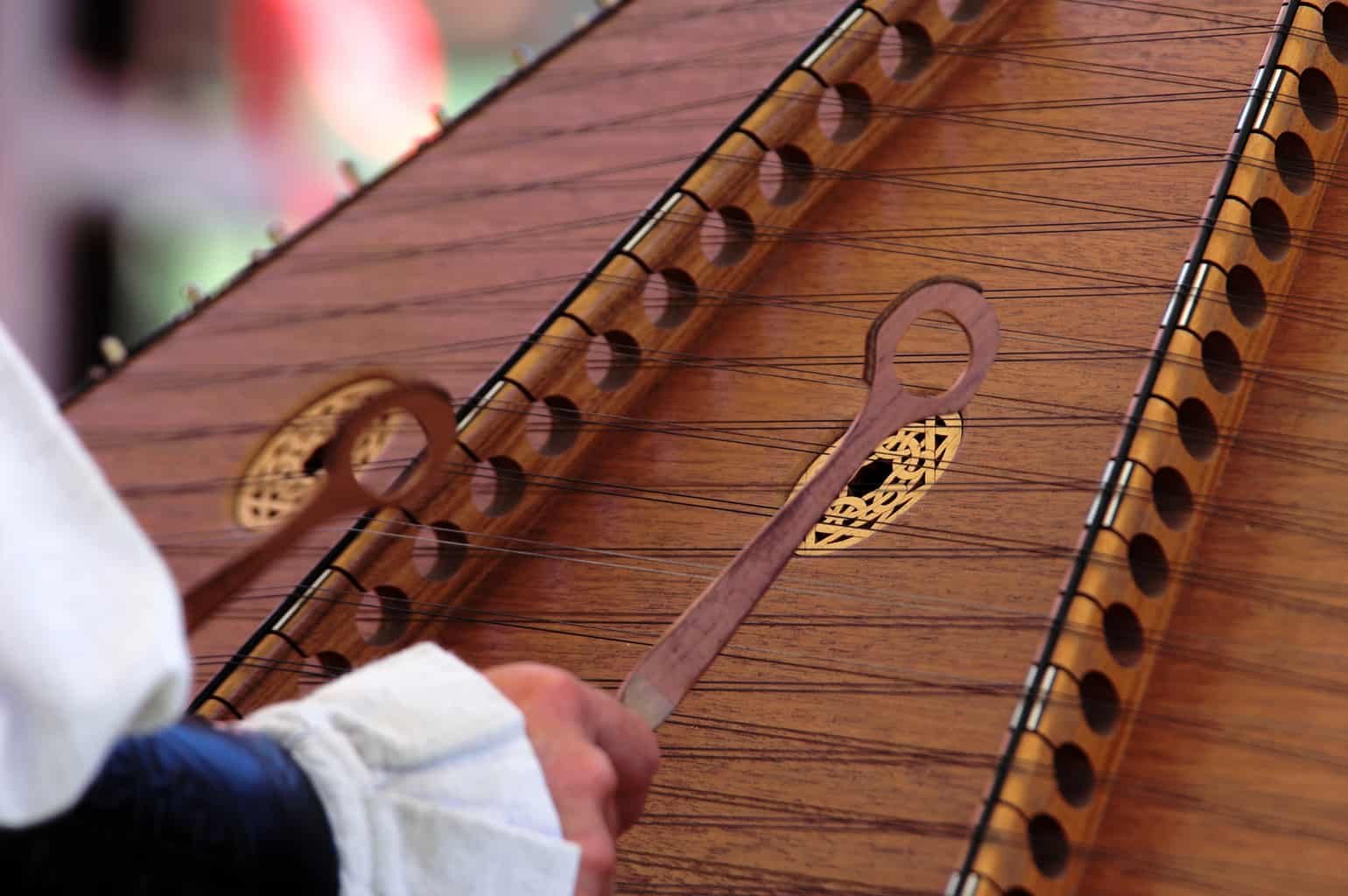Physical Address
304 North Cardinal St.
Dorchester Center, MA 02124
Physical Address
304 North Cardinal St.
Dorchester Center, MA 02124


How To Buy A Hammered Dulcimer: When buying a hammered dulcimer, consider the type (diatonic or chromatic), size/portability, material/construction quality, budget/value for money, and additional accessories.
When purchasing a hammered dulcimer, it’s crucial to understand the different types available and their unique characteristics. The two main types are diatonic and chromatic dulcimers.
The size and portability of a hammered dulcimer are important factors to consider, especially if you plan to transport it frequently or have limited space for storage. Smaller dulcimers are generally lighter and easier to transport, while larger ones offer a fuller sound.

If portability is a priority, consider a smaller dulcimer with a lightweight build. However, keep in mind that smaller instruments may have a slightly compromised sound quality compared to their larger counterparts. Strike a balance between portability and sound projection that suits your needs.
The materials used in constructing a hammered dulcimer can significantly impact its sound and durability. Most dulcimers are made from wood, with the soundboard usually crafted from a resonant wood such as spruce, cedar, or mahogany.
Consider the quality of the wood used, as well as the craftsmanship and construction techniques employed. Look for well-constructed instruments with solid joints and a smooth finish. Higher-quality materials and construction will result in a more resonant and responsive instrument.
When buying a hammered dulcimer, it’s important to establish a budget and consider the value for money that each instrument offers. Entry-level dulcimers are available at more affordable prices, but they may have limitations in terms of sound quality and playability. Investing in a higher-quality instrument will generally yield a better playing experience and longevity.
Research different brands, read reviews, and consider seeking advice from experienced players or music teachers to find the best value for your budget. Keep in mind that a well-maintained and properly cared-for hammered dulcimer can retain its value and provide you with years of enjoyment.
When purchasing a hammered dulcimer, take into account the additional accessories and features that come with it. Some important considerations include:
Learning the hammered dulcimer can be challenging but rewarding. It requires time, dedication, and practice to develop the necessary skills. While the instrument may seem complex initially, with proper instruction and consistent practice, beginners can gradually grasp the techniques and musicality of the dulcimer. Taking lessons from a qualified teacher and utilizing instructional resources can greatly assist in the learning process.

The average cost of a hammered dulcimer can vary depending on several factors such as the quality of materials, craftsmanship, and brand reputation. Entry-level dulcimers can be found in the range of $300 to $800. Mid-range instruments with better construction and sound quality may cost between $800 and $2,000. Professional-grade dulcimers, with exceptional craftsmanship and superior sound, can range from $2,000 to $5,000 or more. It’s important to consider the value for money and invest in a dulcimer that suits your skill level and long-term goals.
While the hammered dulcimer may appear complex, it can be considered relatively easier to play compared to some other instruments. The layout of the strings and the use of hammers instead of finger placement allow for a more intuitive approach to creating melodies and chords.

However, like any musical instrument, it still requires practice and dedication to develop proficiency. Learning proper hand technique, understanding the layout of the dulcimer, and developing rhythm and coordination are key aspects to focus on during the learning process.
Hammered dulcimers come in various sizes, and the specific dimensions can vary between manufacturers. The size of a hammered dulcimer is generally determined by the number of courses or string pairs it has. Common sizes include 12/11, 15/14, and 16/15, indicating the number of courses on the treble and bass bridges, respectively. The physical dimensions of the dulcimer can also vary, but a typical range for the width is between 35 to 45 inches, and the depth can range from 15 to 20 inches.
Can I learn to play the hammered dulcimer if I’m a beginner?
Absolutely! The hammered dulcimer can be learned by beginners with dedication and practice. It’s recommended to take lessons from a qualified teacher to learn proper technique and get started on the right foot.
How often do I need to tune a hammered dulcimer?
The frequency of tuning depends on factors such as the quality of the instrument, environmental conditions, and how often it’s played. Generally, dulcimers require tuning every time before playing and occasional adjustments as needed.
Can I buy a used hammered dulcimer?
Yes, buying a used hammered dulcimer can be a cost-effective option. However, it’s essential to thoroughly inspect the instrument for any damage or defects and play it to ensure its sound quality meets your expectation.
Buying a hammered dulcimer is an exciting endeavor that requires careful consideration of various factors. By understanding the different types, considering size and portability, evaluating material and construction quality, setting a budget, and exploring additional accessories, you can make an informed decision that suits your needs and preferences. Remember, it’s crucial to try out different instruments, seek advice from experts, and prioritize the value and quality of the dulcimer to ensure a satisfying and enjoyable playing experience for years to come.